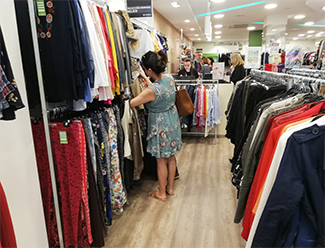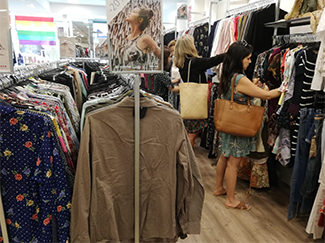consent_cookie
Duración: 1 year
Stores the user's cookie consent state
21-06-2019
Humana has just opened its second sustainable fashion store in Valencia. It is located on Calle San Vicente Mártir, 72, in the heart of the city, a few minutes from the Plaza del Ayuntamiento. It has 145 square meters of surface.
It is necessary to remember that a little over a week ago Humana's network of stores arrived in the Valencian capital with the opening of its first point of sale, located in Literato Azorín street, 16, at the confluence with Calle Sueca, in full center of the city, in the well-known Ruzafa area. For some, the coolest Valencian neighborhood.
With the San Vicente Martir are already 51 stores throughout Spain. Last year the Foundation's network of sustainable fashion spaces registered more than 1.7 million customers, who acquired 4.79 million garments.
Buy secondhand fashion avoids the consumption of millions of new garments
Acquiring second-hand clothes avoids the annual consumption of millions of new garments in our country, which translates into a significant saving of natural resources that the fashion industry requires to satisfy the demand of fast-fashion.
This is reflected in a Humana Report based on a survey of 700 customers of secondhand fashion stores in Madrid and Barcelona, which indicates that six out of ten users say that, when buying a garment in the establishments of the Foundation, they do not need to acquire it. in another conventional point of sale.
This replacement index confirms the environmental value of the reuse. "There is no more sustainable garment than the one already manufactured. It is a perfect example of how to extend the life cycle of clothing and buy consciously, "says the responsible for Sustainable Development of Humana, María Martínez. It is estimated that a fast fashion garment is used an average of five times and we get rid of it just 35 days after buying it.
2.7 million new garments left out in 2018
Customers of Humana stores acquired 4.7 million garments last year. This implies that, as a minimum, the commitment to reuse prevented the consumption of 2.7 million new articles in 2018, taking into account that replacement rate of 60%. It is a relevant saving for the environment taking into account that, for example, a jeans type requires 3,781 liters of water in the process of cotton production, manufacturing, transport and washing, and causes an emission of 33.4 kilos of CO2 during this cycle.

